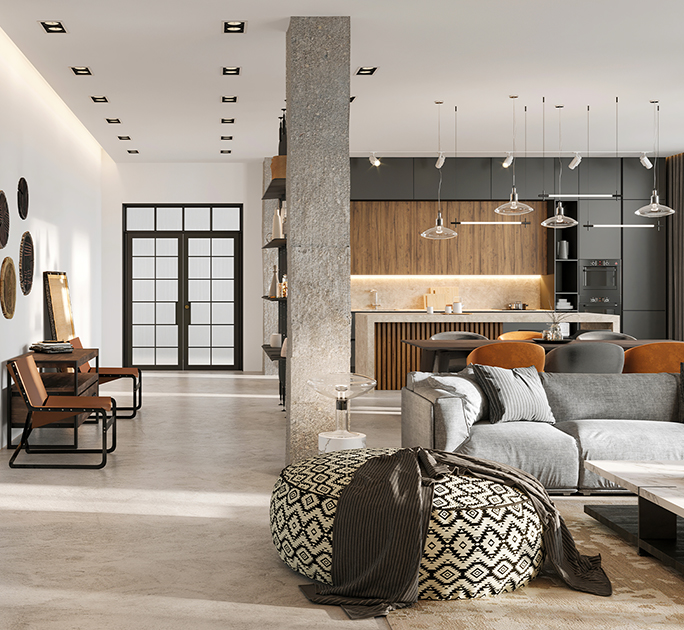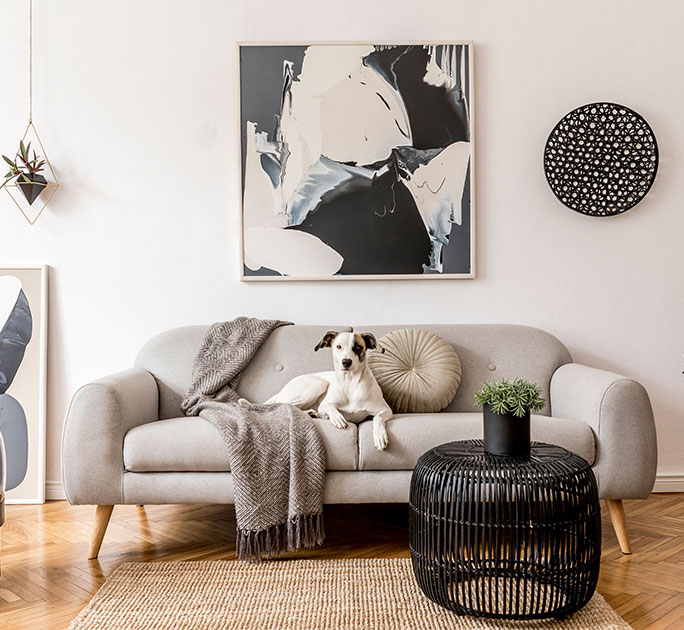By Lynette Tan
![]()
If you’ve only got a minute:
- Purchasing your flat is a huge milestone, but getting ready to move in requires some transitional steps.
- Renovations, buying home furnishings and moving all cost money – it’s important to set up a budget to avoid overspending.
![]()
Congratulations on your new home! While it's an exciting milestone, there are still several steps ahead as you settle into your new space. Proper planning and budgeting during this transition period is key. Here is a timeline of what to expect and tips on managing cashflow in the months after getting your keys:
Kick-start renovations
If you plan on doing major renovations, it's best to get quotes from interior designers or contractors early and factor these costs into your budget. Renovation costs vary greatly depending on the extent of renovation, timeline, as well as the renovation company you are contracting.
If you are planning major renovations like knocking down walls, redoing the kitchen or bathrooms, get quotes from at least 3 contractors to have an idea of the average price. Major renovation projects often take longer and cost more than initially expected, so factor in contingencies of 10-20% on top of the quotes. The scope of work, timeline, contract terms, and payment schedule should be clearly specified.
For big projects, consider hiring an interior designer and architect. They can help with the design, manage contractors, and keep the project on schedule and budget.
Doing major renovations also means you may need some help in the cash flow department. You can consider taking up a renovation loan which is used specifically to pay for renovation work. Do ensure you know what you can use for the loan for before applying as there are restrictions.
As the renovation loan has a borrowing limit of S$30,000, you may consider using a personal loan to supplement your cashflow. Before taking up any loan, do ensure that you can service the monthly repayments promptly. A guideline is to keep your Total Debt Servicing Ratio (TDSR) under 55%, that is, limit your monthly debt repayments to 55% of your gross monthly income.
Minor cosmetic upgrades like repainting walls or replacing fixtures will likely take up a shorter time and you may even have them done as you live in the space. Staging your furniture will also help you identify priority areas. To find out more about the style of renovation or the average renovation cost, do check out DBS Home marketplace for more ideas.

Budget for furnishing costs
Furnishing your new home can be exciting as you imagine filling your home with pieces of your favourite things which will be part of your everyday life. Before you get carried away, it is best to list down the big- ticket items you need and start by creating a budget.
Furnishing a new home can be expensive and can easily cost more than a 5-figure sum. Setting up a budget will help you keep your expenses in check and to manage your cashflow in the coming months.
Since you can anticipate this expense, check for bank promotions and credit card deals that offer additional discounts at participating retailers. You can even use your credit card smartly to earn cashback, miles and rewards.
To better manage your cashflow, you can try to stagger major purchases that aren't immediately needed. Some credit cards offer Instalment Payment Plans (IPPs) without interest payments for a limited time. As long as you can manage the usage of these wisely, IPPs can be helpful in managing your cashflow when purchasing big-ticket items.

Moving preparations
Give yourself at least 4-6 weeks to prepare for moving day. Create a detailed inventory of all your belongings room-by-room and decide what will make the move with you. You may also want to think about listing your existing furniture for sale or giving them away if you are not bringing them with you.
Moving is often a good time to declutter as well! Consider giving away things that you haven’t used for years or donate them away. This will reduce the number of boxes and clutter in your new home.
Hire professional movers at least 1 month in advance for a smooth experience. They have the proper equipment and expertise to efficiently disassemble and reassemble furniture. Packing and moving on your own risks damage to your belongings and injuries.
For a standard 3-bedroom apartment move within the same state, expect to spend between S$800 and S$1,500 depending on distance and flight of stairs. Get quotes from reputable moving companies and check for any additional fees for items like a piano or oversized item charges.
On moving day, oversee the movers to ensure proper care is taken and do a final sweep of the old property before handing over the keys. Lastly, for large furniture/appliances that you do not want to bring with you, do ensure that you arrange for proper disposal as well which is estimated to cost S$500 – S$1,500.
Utilities and services
In Singapore, electricity and water utilities are handled by SP Services. You can set up new accounts online via their website or mobile app. A utility account must first be created before you can book an appointment to physically turn on the utilities.
You may also want to start to research and compare plans for cable/internet providers in your new area. Installation may take 1-2 weeks so schedule this at least 2 weeks prior to move-in. Consider speed and data needs for streaming, gaming and smart devices.
Scheduling utilities and services early ensures everything is ready on move-in day to make it as smooth as possible. You can also make use of credit cards such as the POSB Everyday card to set up a recurring bill payments for your utilities to receive cash rebates.
Getting essential groceries
While setting up your new home, don’t forget your grocery list! Amidst the cleaning, moving and unpacking, you may find yourself wanting a cold drink from the fridge, missing a snack to munch on or lacking a cleaning product. So help yourself with a quick grocery trip to the nearest supermarket and stock up some essentials. Don’t forget to use your DBS Yuu Card to earn rebates and points while you are at it!
Protect your home with Home Insurance
It is important to have both fire insurance and home contents insurance to fully protect your home. While fire insurance covers damage to the physical structure of your home due to fire, smoke, lightning and other common hazards, it does not cover your possessions within the home.
That's where home contents insurance comes in. It protects your personal belongings like furniture, electronics, clothing, and other items in case they are damaged or stolen. Having both fire and home contents insurance provide comprehensive coverage to safeguard your home and its contents.
With the right home insurance coverage, you can have peace of mind knowing that your most valuable asset is protected.
Know your neighbours
Making friends with your neighbours can be rewarding in many ways. They can recommend the tastiest hawker stalls nearby, help you to water your plants when you are on holidays and even lend you ingredients when you're in a pinch. Positive relationships with neighbours make for a richer community experience.
With modern technology, it's becoming easy to stay holed up at home without interacting face-to-face. It can also be tricky to gauge the right level of familiarity when getting to know those next door. Start with simple greetings when you see them leaving home in the morning or offering some snacks to the kids next door. Who knows? A friendship may blossom and it would make living there a joy every day you come home.
Remember, your home purchase is not the end of the journey; in fact, it is the start of a new chapter. With proper planning and budgeting, you can settle into your new home with minimal stress. Focus on the must-haves first, and the remaining items can be purchased over time. Enjoy the process of making your new house into your home!







